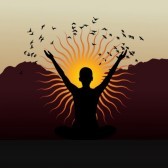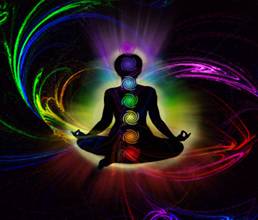|
A mantra is a mystical or sacred sound whose vibrations create
a powerful effect. It may be a word or a phrase which is repeated
over and over again. Repetition may be out loud whispered,
repeated internally or written down in a pattern.
The most widely used mantra is OM or AUM. It is said to be
the word from which the universe is created, it is the universal
mantra - the whole universe vibrates to the sound OM. It was
heard by the great Rishis and Sages in the stillness of the
Himalayas. OM is mentioned in all the ancient yoga text.
"I will give you the sacred word which expresses all
the highest things, and all the highest actions and longings.
That word is OM." Katha Upanishad.
OM, This eternal word is all: that was, what is and what
shall be, and all what beyond is in eternity.
All is OM.
OM (AUM) contains three sounds, and conscious comprises four
states:
The first state is waking live, corresponding to the sound
A
The second state is the dream, corresponding to the sound
U
The third state is deep sleep, corresponding to the sound
M
The forth is the state of samadhi, the fully awakened state
of pure consciousness in which our divinity, our unity with
the whole of creation, and with the force behind creation
is recognised. The state is represented by all three ayllables
joined together in the one word AUM. "Mandukya
Upanished"
Chanting OM is one of the most powerful ways of relaxing mind
and body. It is said that if we have any disease or imbalance
in our bodies, we can bring ourselves back into balance by
chanting OM.
Use it with respect.
|








